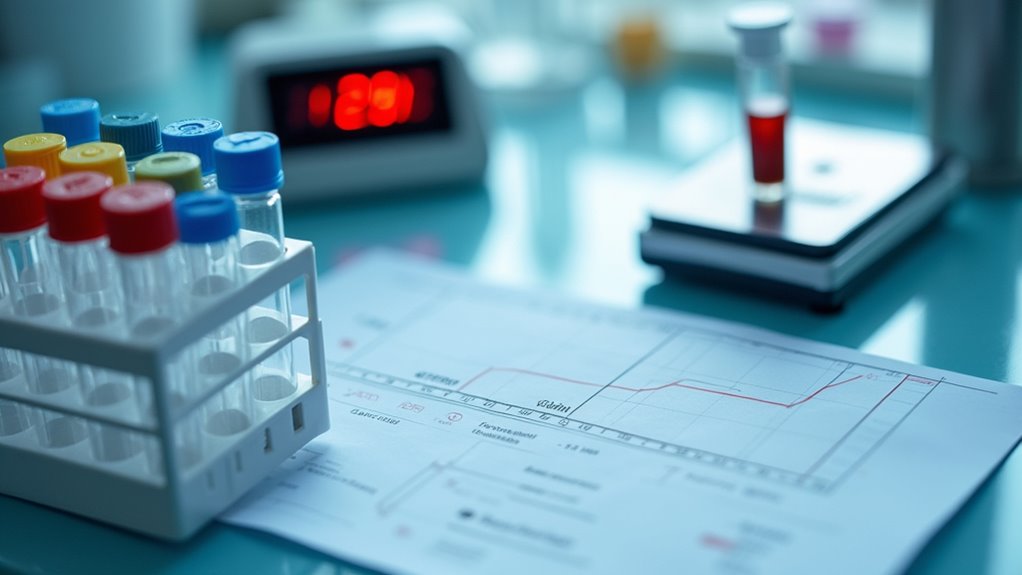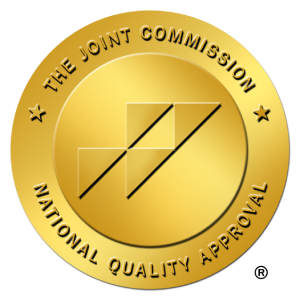Crystal meth remains detectable in your system for different periods based on the test type: 1-3 days in blood, 3-7 days in urine (up to 14 days for chronic users), 1-4 days in saliva, and up to 90 days in hair. Your metabolism, body composition, usage frequency, dosage, and general health all influence detection timeframes. The drug’s 10-12 hour half-life means most clears within 2-3 days, though chronic use extends detection windows due to accumulation in body tissues.
What Is Crystal Meth and How It Works in the Body

Crystal methamphetamine, commonly known as crystal meth, is a potent synthetic stimulant that affects the central nervous system by triggering an excessive release of dopamine, norepinephrine, and serotonin. This substance appears as clear crystal chunks resembling ice or glass, and is typically smoked, though it can also be injected, snorted, or ingested orally.
When you consume crystal meth, it rapidly enters your bloodstream and crosses the blood-brain barrier. Your body metabolizes it primarily through your liver, converting it into amphetamine and several other metabolites. The drug’s half-life ranges from 10-12 hours, meaning it takes approximately that time for your body to eliminate half of the dose. Crystal meth’s body effects include increased heart rate, raised blood pressure, hyperthermia, reduced appetite, and intense euphoria followed by severe crashes.
Detection Windows for Different Types of Drug Tests
Crystal meth can be detected through multiple testing methods with different detection windows depending on your usage pattern and individual metabolism. Blood tests typically identify methamphetamine for 1-3 days after use, while urine analysis may detect the drug for 3-7 days in occasional users and up to 14 days in chronic users. Hair follicle testing offers the longest detection period, with the ability to identify methamphetamine use for up to 90 days after consumption, making it the preferred method for detecting historical drug use patterns.
Blood Test Detection Periods
When considering blood tests for methamphetamine detection, you should understand that these tests offer a relatively short detection window compared to other screening methods. Blood tests can typically detect meth for approximately 1-3 days after last use, making them useful primarily for identifying recent consumption.
The detection accuracy of blood tests is quite high, as they measure the actual presence of methamphetamine and its metabolites in your bloodstream. This makes them particularly valuable in medical emergencies or legal situations requiring definitive proof of current intoxication. The detection timeframe varies based on several factors including dosage, frequency of use, metabolism rate, and general health. Chronic, heavy users may test positive for slightly longer periods due to drug accumulation in the body’s tissues that gradually releases into the bloodstream.
Urine Analysis Timeframes
Urine tests represent the most common screening method for methamphetamine detection, offering a substantially longer detection window than blood tests. For occasional users, meth typically remains detectable in urine for 3-5 days after use, while chronic or heavy users may test positive for up to 7-14 days. This extended timeframe occurs because metabolites of methamphetamine persist longer than the parent compound.
Standard urine analysis employs immunoassay screening followed by confirmatory gas chromatography-mass spectrometry (GC-MS) when results are positive. These detection methods can identify both methamphetamine and its primary metabolite, amphetamine. The cutoff concentration for most standard urine tests is 500-1000 ng/mL for initial screening, with confirmation thresholds of 250-500 ng/mL. Factors affecting detection include dosage, frequency of use, metabolism rate, and urine pH.
Hair Sample Timetables
The analysis of hair samples provides the longest detection window for methamphetamine among all testing methods, with traces remaining identifiable for up to 90 days after use. Your hair grows approximately 0.5 inches per month, with each segment documenting your drug exposure history chronologically.
Modern hair analysis techniques can detect even single-use instances, though regular users show notably higher concentrations. Lab technicians typically collect 1.5 inches of hair from close to your scalp, representing your most recent 90-day exposure window. Drug testing accuracy in hair samples ranges from 95-99% when proper chain-of-custody protocols are followed.
Unlike urine or blood tests, you can’t accelerate the clearance of meth from hair through hydration or detox methods. The drug becomes integrated into the hair shaft as it grows, creating a permanent record until that segment is cut.
Factors That Affect How Long Meth Stays in Your System
Your body composition directly affects how crystal meth is metabolized, as the drug concentrates in fatty tissues and is eliminated more slowly if you have a higher body fat percentage. Frequency of use considerably impacts detection windows, with chronic users retaining detectable metabolites longer than one-time users due to drug accumulation in different tissues. These accumulated deposits can extend your detection window from days to weeks, particularly when subjected to advanced testing methods like hair analysis.
Body Composition Matters
Individual physiology plays a significant role in methamphetamine elimination rates. Your body composition directly influences how quickly you metabolize and excrete meth from your system. The drug is lipophilic, meaning it has an affinity for fat tissue where it can accumulate and release slowly over time.
- Higher body fat percentage typically results in longer detection periods as meth can become stored in adipose tissue
- Greater muscle mass may accelerate clearance rates due to increased metabolic activity
- Lean individuals often eliminate meth faster than those with higher body fat percentages
- Body water content affects dilution of the drug in your system, with higher hydration potentially reducing concentration
These physiological factors create significant interpersonal variations in elimination half-life, explaining why standard detection windows represent averages rather than absolutes for any specific individual.
Frequency of Use
Beyond body composition, how frequently you use methamphetamine greatly impacts its detection window in your system. Initial-time or occasional users typically clear the drug faster than chronic users. With occasional use, meth may remain detectable for 2-4 days in urine tests, while chronic users face extended detection periods of 7+ days.
This phenomenon occurs because regular use establishes cumulative buildup in fatty tissues. Your use patterns create what clinicians call “loaded compartments” where methamphetamine metabolites accumulate and release gradually. Frequency implications are particularly significant with heavy, daily use, as these patterns lead to metabolite saturation in your system.
Additionally, frequent users often develop tolerance, potentially prompting higher dosages that further extend detection timeframes across all testing methodologies blood, urine, saliva, and hair analyses.
Urine Testing: The Most Common Detection Method

When drug testing for methamphetamine is required, urine analysis stands as the predominant screening method due to its reliability, cost-effectiveness, and relatively extended detection window. Methamphetamine metabolites remain detectable in your urine for 1-4 days after single use, while chronic users may test positive for up to a week.
- Testing accuracy depends on the immunoassay threshold, typically set at 500-1000 ng/mL for initial screening
- False positives can occur from certain medications including pseudoephedrine and selegiline
- Urine color and concentration impact detection sensitivity, with diluted samples potentially yielding false negatives
- Confirmation tests using gas chromatography-mass spectrometry (GC-MS) provide definitive results with 99% accuracy
These timeframes vary based on individual metabolism, hydration levels, and specific testing methodologies employed by laboratories.
Blood and Saliva Testing: Shorter Detection Periods
Unlike urine testing, blood and saliva analyses provide markedly narrower detection windows for methamphetamine, making them better indicators of recent drug use. Blood tests can detect meth for approximately 1-3 days after consumption, with concentrations peaking around 2-4 hours post-ingestion. The drug’s half-life of 10-12 hours means blood concentrations decrease relatively quickly.
Saliva tests offer similar detection timeframes, typically identifying methamphetamine for 1-4 days following use. These tests are increasingly preferred in roadside drug screenings due to their non-invasive collection method and ability to detect very recent consumption. Both blood and saliva tests can determine current impairment levels, unlike urine screening, which merely confirms past use. The detection window varies based on dosage, frequency of use, and individual metabolic factors.
Hair Follicle Testing: Long-Term Detection Capabilities

Hair follicle testing represents the most extensive detection method for methamphetamine, capable of identifying drug use for up to 90 days after consumption. The technique analyzes drug metabolites deposited into hair follicles through blood vessels during hair growth, providing a historical record of substance use.
- Detects methamphetamine at concentrations as low as 500 pg/mg of hair
- Offers a segmental timeline analysis correlating with hair growth rate (approximately 1 cm/month)
- Remains effective despite washing, dyeing, or other cosmetic treatments
- Provides evidence of long-term effects through chronological mapping of usage patterns
This testing modality requires specialized laboratory equipment utilizing gas chromatography/mass spectrometry (GC/MS) confirmation protocols. The sample collection process involves cutting 100-120 strands from close to the scalp, preserving the chronological exposure record.
Metabolism and Elimination: How the Body Processes Meth
Understanding the physiological pathways of methamphetamine processing reveals why detection windows vary across different testing methods. When you ingest meth, your liver metabolizes it primarily through two metabolic pathways: N-demethylation and aromatic hydroxylation. These processes convert methamphetamine into amphetamine and other metabolites that your body can eliminate.
Your kidneys handle approximately 45% of meth elimination through urinary excretion, with the drug’s acidic environment accelerating this process. The remaining percentage undergoes further breakdown or exits through other bodily fluids. Remarkably, your body eliminates methamphetamine with a half-life of 10-12 hours, meaning it takes approximately 2-3 days to clear most of the drug from your system. However, factors like kidney function, urine pH, and dosage considerably affect these elimination processes.
Signs and Symptoms of Crystal Meth in the System
The physiological and psychological manifestations of methamphetamine intoxication become apparent within minutes of consumption and can persist for several hours or days depending on dosage and frequency of use. Crystal meth effects typically manifest in distinct phases as the drug moves through your system.
Methamphetamine intoxication develops rapidly and follows predictable phases, with effects lingering for hours or days beyond initial consumption.
- Initial rush: Raised heart rate, hyperthermia, dilated pupils, and intense euphoria occurring 0-30 minutes after administration
- High phase: Hyperactivity, decreased appetite, increased blood pressure, and grandiose thinking lasting 4-16 hours
- Tweaking: Anxiety, paranoia, hallucinations, and compulsive behaviors emerging after prolonged use
- Crash and withdrawal symptoms: Profound fatigue, hypersomnia, irritability, and intense drug cravings appearing as blood concentrations decline
These manifestations vary greatly based on individual factors including metabolism, tolerance, and concurrent substance use.
Treatment Options and Support for Meth Users
As withdrawal symptoms emerge during the crash phase, effective interventions become available to support recovery from methamphetamine dependence. You’ll find that evidence-based treatment options include cognitive-behavioral therapy (CBT), contingency management, and the Matrix Model a 16-week extensive behavioral treatment approach combining behavioral therapy, family education, and 12-step support.
Pharmacological interventions, though limited, show promise with medications like bupropion and naltrexone to reduce cravings. Support groups such as Crystal Meth Anonymous and SMART Recovery provide vital peer assistance during your recovery path.
Treatment typically progresses through detoxification, residential rehabilitation, and outpatient care, with most programs lasting 30-90 days. For ideal outcomes, you’ll need individualized treatment plans addressing co-occurring mental health disorders and providing ongoing relapse prevention strategies.
Frequently Asked Questions
Can Second-Hand Meth Smoke Exposure Cause a Positive Drug Test?
Second-hand meth smoke exposure can potentially cause a positive drug test, though it’s less common than direct use. You’re at risk primarily in poorly ventilated spaces with heavy smoke concentration. Studies indicate that passive methamphetamine exposure introduces detectable amounts into your system, particularly through hair tests which are highly sensitive. Beyond testing concerns, you’ll face significant health risks from second-hand exposure, including respiratory issues and potential neurotoxic effects even at low concentrations.
Does Drinking Water or Exercising Help Clear Meth Faster?
Increased hydration doesn’t greatly accelerate methamphetamine clearance from your system, though it may dilute urine concentrations temporarily. Exercise’s benefits for elimination remain scientifically unproven while physical activity increases circulation, methamphetamine’s elimination is primarily governed by liver metabolism and renal function. You can’t notably alter meth’s half-life (9-12 hours) through these methods. Metabolic rates and individual factors like maturity, weight, and kidney function ultimately determine how quickly you’ll clear the substance from your body.
Can Prescription Medications Cause False Positives for Methamphetamine?
Yes, you can experience false positives for methamphetamine due to prescription interactions with certain medications. Compounds like pseudoephedrine, ephedrine, and some antidepressants may create medication metabolites that structurally resemble methamphetamine. These similarities can trigger positive results on standard immunoassay tests. More specific confirmation testing methods like GC-MS (gas chromatography-mass spectrometry) can differentiate between actual methamphetamine and these false positives. Always disclose your prescription medications when undergoing drug testing to avoid misinterpretation of results.
How Does Meth Use During Pregnancy Affect Drug Testing Outcomes?
Methamphetamine use during pregnancy creates complex drug testing scenarios. Your fetus metabolizes substances differently, which can affect detection timeframes in both maternal and fetal specimens. Metabolites may persist longer due to altered maternal clearance mechanisms. Placental transfer results in drug concentration in amniotic fluid, meconium, and umbilical cord tissue all valuable testing matrices. These physiological changes compromise both maternal health and fetal development, potentially yielding positive results weeks after last use in certain biological specimens.
Are Home Drug Tests for Meth as Accurate as Laboratory Tests?
Home tests for methamphetamine aren’t as accurate as laboratory tests. While home test kits can detect meth, they have higher rates of false positives and negatives. Lab tests offer superior home test accuracy through advanced techniques like gas chromatography-mass spectrometry. Your home test results should be considered preliminary at best. Lab test comparison reveals laboratory testing’s advantages: lower detection thresholds, ability to quantify concentration levels, and confirmation testing to eliminate cross-reactivity with similar compounds like certain medications.






